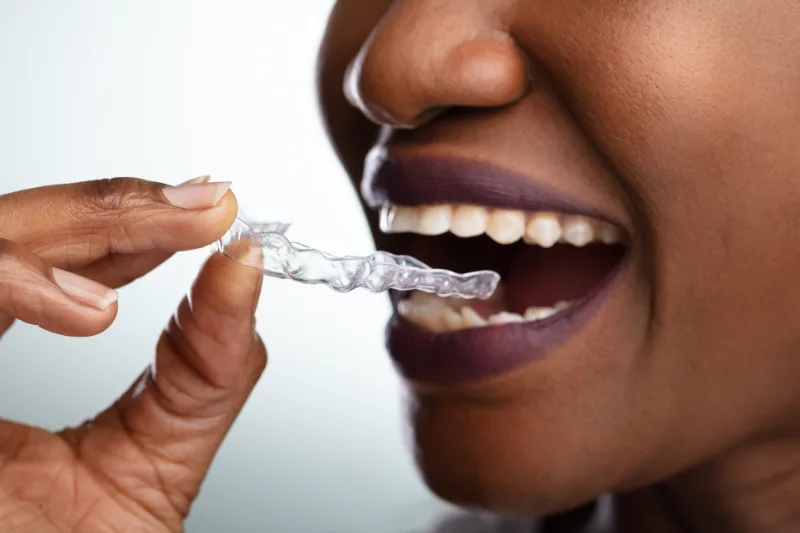
If you wake up feeling unrefreshed or your partner complains about your disruptive snoring, you may have sleep apnea. Sleep apnea is a common sleep disorder characterized by pauses or decreased breathing during sleep. One potential contributing factor? Crooked teeth or a misaligned bite.
How Jaw Position Affects Breathing
During sleep, the muscles in the throat naturally relax. In people with correctly aligned jaws and bites, this doesn’t pose a problem. However, if your teeth are crowded or your jaw doesn’t fit together properly, this relaxed state can cause your airway to narrow or become blocked. Your brain senses this disruption in breathing and partially awakens you to reopen your airway. This results in poor, interrupted sleep all night long.
Signs That Your Bite May Contribute to Sleep Apnea
You may be more likely to develop obstructive sleep apnea if you have the following dental issues:
- Crowded teeth
- An overbite or underbite
- An uneven bite, with some teeth hitting prematurely
- Teeth grinding or clenching
How Orthodontics Can Help
The good news is that orthodontic treatment can correct these dental flaws and often eliminate or drastically improve sleep apnea symptoms. By aligning your teeth and jaws, orthodontics helps open up your airway for improved breathing at night.
Braces and clear aligners are two of the most common appliances used. Both work by gently shifting teeth into their ideal positions over time. As your teeth alignment improves, your jaw is better able to maintain your airway when throat muscles relax during sleep.
Leverage Your New Smile with Myofunctional Therapy
Once your teeth are straightened with orthodontic appliances, the work isn’t quite done yet. To prevent teeth from shifting back and maintain your open airway, incorporate myofunctional therapy.
Myofunctional therapy involves special exercises to train your tongue, lips, jaw, and facial muscles. Many people develop bad habits over time, such as incorrect swallowing, that contribute to dental problems. Myofunctional therapy essentially re-trains these muscles for proper function, positioning your teeth naturally.
After your braces or aligners are removed, myofunctional therapy can help cement results by encouraging good oral habits. It teaches and strengthens the muscles needed to keep teeth aligned properly. Not only does this help preserve your new smile, but it also prevents relapse of sleep apnea symptoms.
Some key benefits of myofunctional therapy include:
- Stops harmful oral habits
- Encourages proper tongue position
- Strengthens jaw and facial muscles
- Supports nasal breathing day and night
By pairing myofunctional therapy with orthodontic treatment, you’ll maximize corrections to your bite for improved sleep quality. Healthy alignment and well-toned muscles work together to maintain an open, unobstructed airway.
Ask your orthodontist and dentist about incorporating myofunctional treatment before and after orthodontic care. With some re-training of your mouth and facial muscles, you’ll breathe easier and enjoy more restful sleep for years to come.
Ready for Better Sleep?
If you suffer from sleep apnea, checking in with your dentist or orthodontist is a wise first step. An evaluation of your bite and dental alignment can identify any issues contributing to your disrupted sleep. From there, you can explore orofacial myofunctional solutions to help resolve sleep apnea and get back to restful nights. Contact The Center for Orofacial Myology for an evaluation to see if orofacial myofunctional therapy is right for you at 208-793-7006 or centerfororofacialmyology.com!